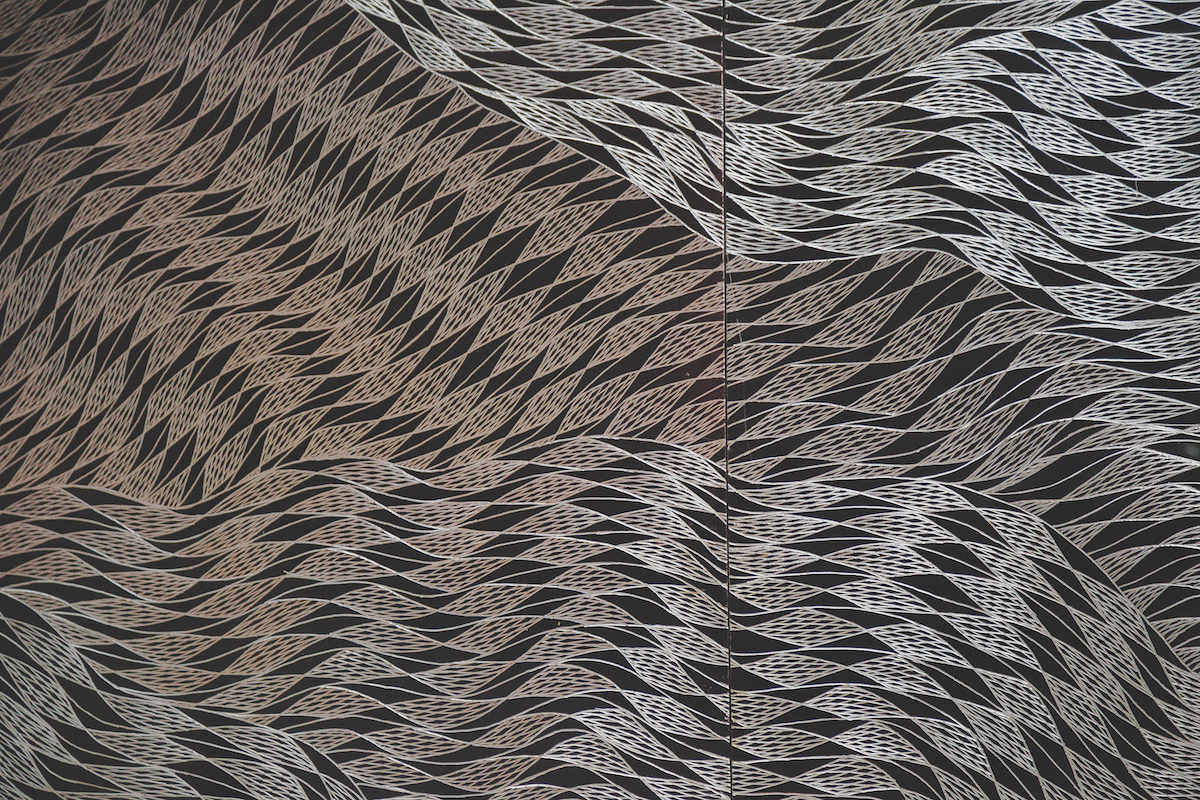Gunybi Ganambarr
Words: John McDonald
Photography: Elle Wickens
It’s hard to name another Australian artist who has been so consistently innovative over the past decade as Gunybi Ganambarr. What makes Ganambarr’s achievements even more incredible is that he lives in a small community in Yirrkala, Arnhem Land, and adheres closely to the spiritual and cultural conventions of the Yolŋu people. Ganambarr has forced us to recognise that Indigenous art can be highly progressive while remaining grounded in age-old tradition.
Each time he ventures some startling new aesthetic departure Ganambarr runs it past his mentor, senior Yolŋu leader, Djambawa Marawili – himself a distinguished artist. Marawili’s approval gives Ganambarr the green light to keep pushing forward. His example in turn acts as an inspiration to other artists, empowering them to experiment and push the boundaries. This process has helped make Yirrkala the most dynamic of all Indigenous art communities.
In his first two solo exhibitions at Annandale Galleries in 2009 and 2012, Ganambarr virtually reinvented bark painting, one of the world’s oldest living art forms. He was equally imaginative with the transformations he wrought on the ceremonial burial pole, or larrakitj. Like all great artists, Ganambarr asked questions of his medium no-one had previously thought of asking. “Why,” for instance, “did a larrakitj have to be made from a perfectly smooth, upright tree trunk?” Ganambarr has made poles from bent and gnarled pieces of wood, and even from PVC piping.
Perhaps his most impressive idea was to take the traditional patterns of bark painting and engrave them on large sheets of metal and other objects. His most recent show at Annandale Galleries in Sydney (November 2020 to January 2021) featured his biggest-ever engraved work, a three-panel, 450 by 300-centimetre monster called Buyku. The patterns, which represent converging currents of salt and fresh water, twist and glimmer in the manner of Op Art.
In Milŋurr Ŋaymil Font on Found Washing Machine, Ganambarr engraved an intricate design on the drum of a discarded washing machine. In Milŋurr Ŋaymil Font he takes the galvanised sheets of metal from the top of an old water tank to create a diptych of complex, rhythmic lines, once again suggestive of the play of salt and fresh water. In addition, we see new works made from shiny sheets of insulation foil and even a kinetic sculpture featuring a thin, twisted panel of engraved metal turning in space while suspended from the ceiling.
The wooden poles in the Annandale show were so sinuous and expressive they resembled distorted figures. Buyku swayed like a snake, while another piece was a masterpiece of bulging form and painstaking line-work. With any other artist this would have felt like an astonishing set of innovations, but for Ganambarr it was business as usual. More than the shock of the new, it was the artist’s refinement and intensification of styles that gave this exhibition its special charge.
This article was originally published in Art Collector issue 95, January to March 2021.









